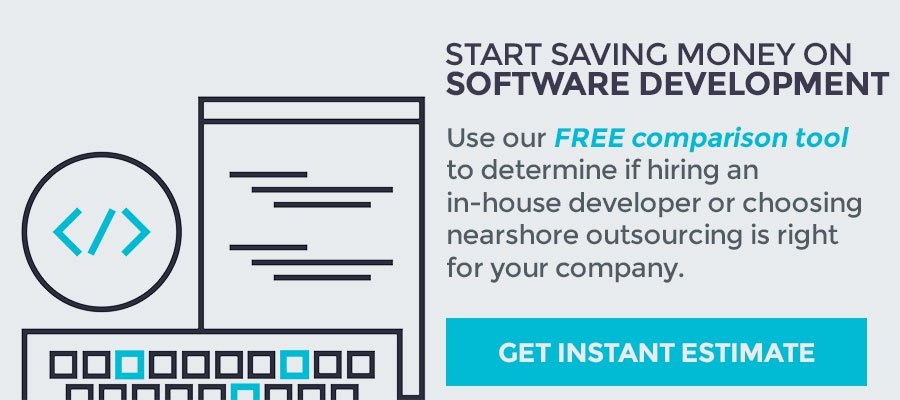
 If you're trying to identify improvement opportunities, your busy team members would be among those who can offer the most insight. However, pulling these people out of their tasks and getting input from them can be difficult. After all, who will get things done while the team is using their time to brainstorm and implement the necessary improvements?
If you're trying to identify improvement opportunities, your busy team members would be among those who can offer the most insight. However, pulling these people out of their tasks and getting input from them can be difficult. After all, who will get things done while the team is using their time to brainstorm and implement the necessary improvements?
Unfortunately, this is the problem most teams find themselves in. Since they are too preoccupied to work on improvements, they never improve the things that could actually help them be more productive and lessen their burdens somewhat so that they're not as busy. That’s why the cycle of inefficiency continues.
In order to deal with the challenges that come with having too much work, many people have resorted to the Kanban method. That's because it provides a systematic approach to finding opportunities for improving a team's efficiency.
Defining a Kanban System
Kanban is a well-known framework that is used in implementing agile software development. It requires full transparency of work, as well as real-time communication of capacity. A kanban board is used to visually represent work items, so team members can see each state of work at any time.
Agile Methodology Overview
Agile is a process that allows teams to give fast and unpredictable responses to any feedback they receive from a specific project. This method opens opportunities to assess the direction of a project during the development cycle.
Teams then examine the project in regular meetings, which are also called iterations or sprints.
Related Article : The Methods of Agile Software Development and Testing
Kanban for Software Development
Thanks to its affiliation with the agile method, Kanban has become a popular tool for software developers. Take note that kanban is not the same as other project management methodologies like the Waterfall approach, Scrum, or Extreme Programming (XP) in the sense that it does not make use of time-boxed iterations.
A time-boxed iteration is defined as a set period of time in which a phase of the project should be finished. Instead of using that, kanban is based on the continuous delivery of products that are targeted towards meeting customer expectations.
One great benefit you can get from practicing kanban is that if the team fails to meet the customer’s expectations, there are still several chances to offer direction for course corrections during iterations.
Kanban is based on iterative work, which is simply work done in small segments that aim to decrease the amount of rework should any change happen. Because of this, customers of a team that practices kanban can give their honest feedback and request changes during a certain iteration, while still keeping the budget in line and preserving the project timeline.
Kanban Board
 All work done by kanban teams revolves around a tool called a kanban board. As mentioned earlier, it's used to visualize work and optimize the workflow among the team.
All work done by kanban teams revolves around a tool called a kanban board. As mentioned earlier, it's used to visualize work and optimize the workflow among the team.
Although some teams prefer to rely on physical boards, virtual boards are crucial to any agile software development. They allow better accessibility from different locations, easier collaboration, and traceability.
Whether a team uses a physical or digital board, their main function is the same: ensuring the team’s work gets visualized, the workflow is standardized, and every dependency and blocker is quickly discovered and resolved.
There are three steps to a basic kanban board: 1. To Do; 2. In Progress, and; 3. Done. Looking at this agile methodology overview, you can see it won't be the same for everyone. The workflow can be mapped to meet the specific process of a particular team depending on their size, goals, and structure.
The kanban methodology depends on real-time communication of capacity and full work transparency. That’s why this method should be seen as a single source of truth for the team’s overall work.
Benefits of Using Agile Kanban
Kanban is widely considered as one of the most popular software development methodologies adopted by agile teams. This method provides many additional advantages for teams of all sizes, including the following:
1. Reduced Number of Bottlenecks
One way to kill efficiency is by multitasking work. The more work items in progress at any specific time, the more switching of context. This hinders their path to project completion. That’s why an important tenet of kanban is to limit the number of works in progress.
2. Flexibility with Planning
Kanban teams only focus on any work that is actively in progress. Once a team finishes a work unit, they simply get the next work item off the top of the backlog. The product owner can freely reprioritize any work in the backlog without having to disrupt the team since any changes made outside the current work items don’t affect the team.
So long as the product owner keeps the most important items on top of the backlog, the team can be sure that they can deliver maximum value to the business. This eliminates the need for fixed-length iterations you see in scrum.
3. Continuous Delivery
In order to maintain quality, it’s important to have continuous integration–the practice of building and testing code throughout the day incrementally. This process of continuous delivery, or CD, involves releasing work frequently, such as daily or even hourly.
CD complements kanban perfectly because both techniques focus on the one-at-a-time and just-in-time delivery of value.
4. Short Time Cycle
One of the key metrics for kanban teams is cycle time. It is the amount of time needed for a unit of work to move through the workflow of the team, from the moment it begins to the moment it is completed. When cycle time is optimized, the team has confidence in forecasting the delivery of any future project.
Such an agile methodology overview might not make the time cycle apparent, but in any case, it can indeed be shorter. Using a kanban framework helps make the team even more involved In a kanban, and the team responsible for whole thing. In other words, the team is responsible for making sure work moves smoothly through the entire process.
Conclusion
When it comes to handling software development projects, there is no one-size-fits-all solution. Agile kanban methodology is definitely not for everyone, as some teams might see other methodologies to be more effective for them. For project managers looking to streamline their processes, it’s up to you to determine what works well for your team.




